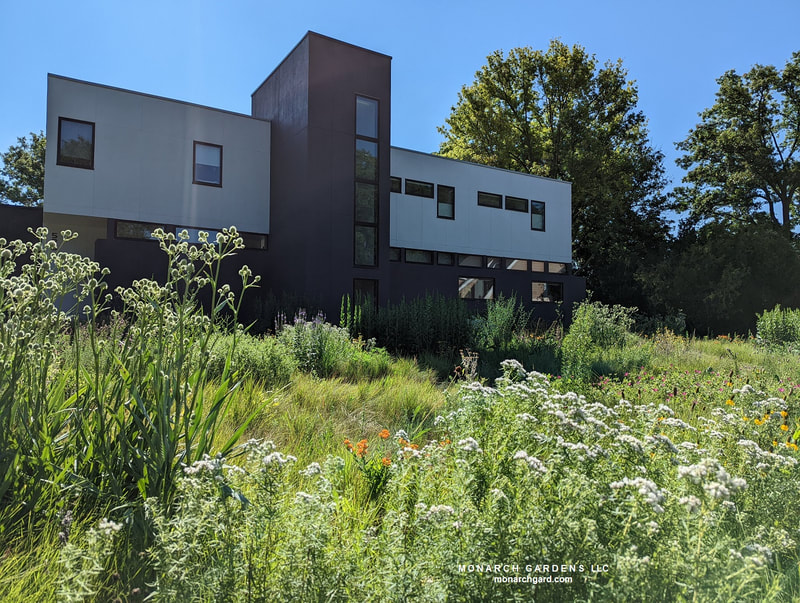I think we treat our plants with too much reverence. We need to let them get tangled up, struggle, and compete. And even fade away. This is how nature works, and we do the plants -- and our goals of creating a sustainable ecosystem -- a disservice when we space plants far apart and without layers. This is something I hammer home in several of my lectures, especially "Fundamentals of Garden Layers."
So what are the benefits of greater plant density and layering? Here is a highlight list:
1) Mimizing herbivore damage. When we use bodyguard plants (grasses, sedges) around plants we know herbivores think are candy (Dalea purpurea, asters, etc), we can reduce our frustrations. One method of design, called matrix planting, is totally suited to bodyguard plants. Employing a matrix or base layer or ground cover of sedge or bunchgrasses placed every 12 inches provides a host of benefits synonymous with every bullet point on this list.
2) Increased habitat. Shelter, food sources, nesting sources, etc.
3) Reduced erosion. More plants intercept more rainfall which they hold on their leaves and stems (big trees are good at this, especially). More plants means more roots, which are also good at holding soil in place.
4) Increased soil moisture. As plants shade the soil surface they help slow evaporation. As plant roots amend soil naturally they help the soil hold more water.
5) Dense plantings compete much better against weeds. Nature abhors a vaccum and wants to fill in the space -- will you let it fill in with crabgrass or would you rather have some pretty flowers with foliage butterfly larvae eat? How much weeding do you want to do year after year after year?
So stop thinking about plants as little sculptures, even in a native plant garden created for wildlife. Wildlife don't want big gaps of wood mulch -- they want plants. Plants want plants. You want more plants. Your plant addiction wants more plants. Choose plants that self sow or run around a little to fill in gaps for free (but choose wisely based on research of the plant in your region, and matching it to your soil and other plants in your bed).
If you need help thinking this all through, there are 13 hours of video content to guide you step by step -- and fall is the BEST time to get planting.





 RSS Feed
RSS Feed

